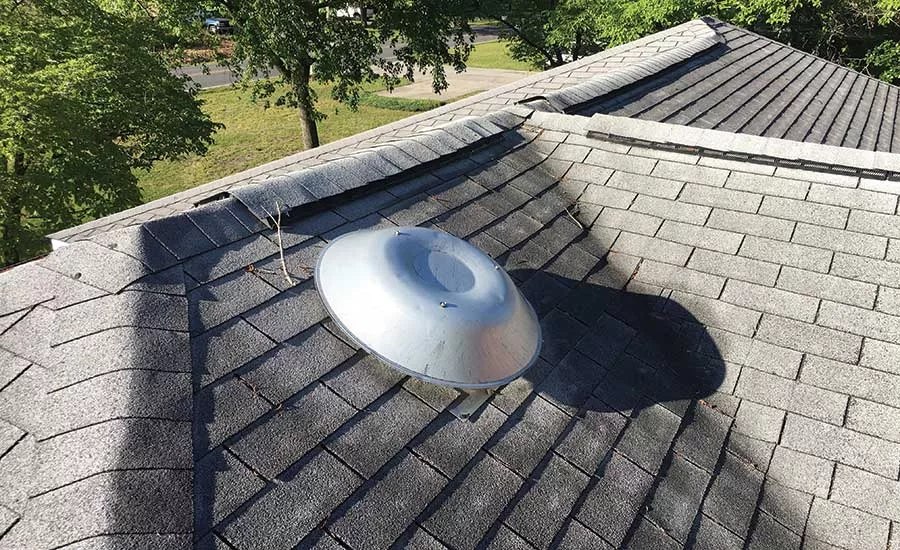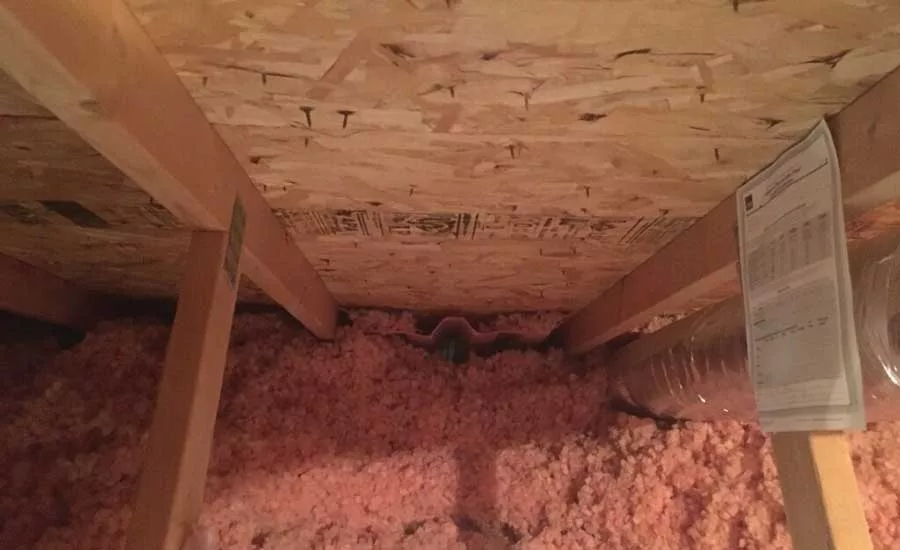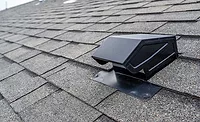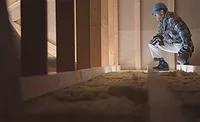Focused On Attic Airflow
Roofing Pros Insist Attic Ventilation is a Core Part of their Overall Business

Often an afterthought and sometimes ignored completely during a residential roofing project, attic ventilation could easily be viewed as a non-essential roofing accessory.

Often an afterthought and sometimes ignored completely during a residential roofing project, attic ventilation could easily be viewed as a non-essential roofing accessory.
Often an afterthought and sometimes ignored completely during a residential roofing project, attic ventilation could easily be viewed as a non-essential roofing accessory. Giving attention to the roof covering material is logical and more obvious. But roofing professionals refuse to underestimate the role of airflow in and out of the attic. In fact, they’ve incorporated proper attic ventilation into their business plans for many reasons, not the least of which is the homeowner’s trust and the roof’s performance.
Your Reputation is on the Line
“Customers are making large purchases and putting their trust in us,” says quality control inspector Sean Toms, of S&K Roofing, in Eldersburg, Md. “They’re expecting the material and roof structure to last the warranty length. They don’t want condensation, delaminating plywood, failing shingles or worse, mold. Attic ventilation needs to be taken seriously.”
So seriously that it’s a non-negotiable part of the roofing project for Jerry Becker, roofing consultant for Roof Life of Oregon, in Tigard, Ore. “It’s our No. 1 topic. We walk away from roofs if the client refuses to install proper ventilation,” Becker says. “We’re not willing to put on a roof that’s less than right, and you could lose the manufacturer’s warranties if you fail to follow the rules. It’s not worth it to cut corners.”
Who wants to be on the receiving end of a callback if the roof has problems down the road that can be attributed to lack of attic ventilation? Not Corey Ballweg, owner and president, Mid Towne Construction Inc., of Cross Plains, Wis.
“Attic ventilation is one of the key issues that I discuss and explain with a client,” he says. “I give attic ventilation the same emphasis as selecting the proper shingle for the project. I explain the potential decking, shingle, ice dam and energy issues that result from poor attic ventilation.”
“We install mostly Class 4 impact-resistant shingles and without the proper amount of intake and exhaust attic ventilation the shingles will be blistering,” says Steve DuCharme, owner, Innovative Builders Roofing & Construction in Edmond, Okla.
Standard Operating Procedure
For these roofing professionals, you hire them for a new roof or home improvement project; you’re automatically having your attic ventilation evaluated.
“It’s the primary focus on how we sell our entire roofing system to each customer, from our first measure-call meeting through the second meeting when we review the proposal,” says Scott Dennison, president, Dennison Exterior Solutions & Gutter Topper in St. Joseph, Mich. “We ensure that each customer witnesses us inspecting their attic, soffit and roof. We also explain thoroughly the attic ventilation process and how manufacturers require proper ventilation be installed in order to validate their new shingle warranty. During the review, we show the customer how we calculated their attic ventilation specific to their home and what we must install on their home.”
“An attic ventilation assessment is implemented in every project we do,” says Jake Jacobson, vice president, SF5 Construction in Little Elm, Texas.
“Proper ventilation is one of the first items I look at when I go out to quote a roofing project,” says Richard Turner, owner of RJ Turner Remodeling. “I want to help each and every customer get as much life out of their roof as they possibly can.”
Notice a pattern here?
“Attic ventilation is very important. It’s a topic I address on every siding and roof project,” says Paul Vosen, president of Degenhardt Home Improvement, Madison, Wis.
“This is very important in my business — mold and indoor air quality — because attics are about one-third of my homeowner calls,” says Tim Chapin, owner of Your Safe and Healthy Home in Akron, Ohio.
Point of Separation
Most roofing contractors ultimately feel that looking out for the customer’s best interests pays off.
“It separates me from the competition so my business stands out,” says Ron Bastian, owner and president of Bastian Roofing Inc., in Richfield, Wis. “I would say 80 percent or better of my competition do not educate the homeowner about the importance of attic ventilation.”
For Shawn Bellis, owner of EPIC Exteriors in Overland Park, Kan., doing it right has allowed him to carve out a unique presence in his market. “We have become niche attic ventilation contractors,” he says.
“Including attic ventilation in my projects separates us from the TLC roofers (Truck, Ladder, Cell phone) and other competition,” somewhat jokingly says Tom Picha, steep slope consultant for Affordable Roofing Inc. in Aurora, Ill.
Unfortunately, because they care about the roofing industry so much, separating themselves from the competition can also be disappointing and frustrating.
“One of the key ingredients to our sales presentation is attic ventilation. So few roofers actually care about ventilation,” says Jeffrey Heitzenrater, owner of Triple Peaks Roofing & Construction Inc. in Westlake, Ohio. “They skip discussing it with the homeowner because they only care about selling a job quickly and at the lowest possible price. They couldn’t care less about selling the quality of the job. In our market the building departments simply don’t care and allow these companies to run like this.”
Officials with KDCO Home Improvement Inc. in Akron, Ohio, say they care. “In selling roofs attic ventilation is very important,” says President Sabrina Johnson. “I do make sure the homeowner is aware of their lack of proper ventilation and the possibility of it null-and-voiding their new roof warranty if it’s not addressed.”
Looking for a reprint of this article?
From high-res PDFs to custom plaques, order your copy today!




.webp?height=200&t=1628274832&width=200)
